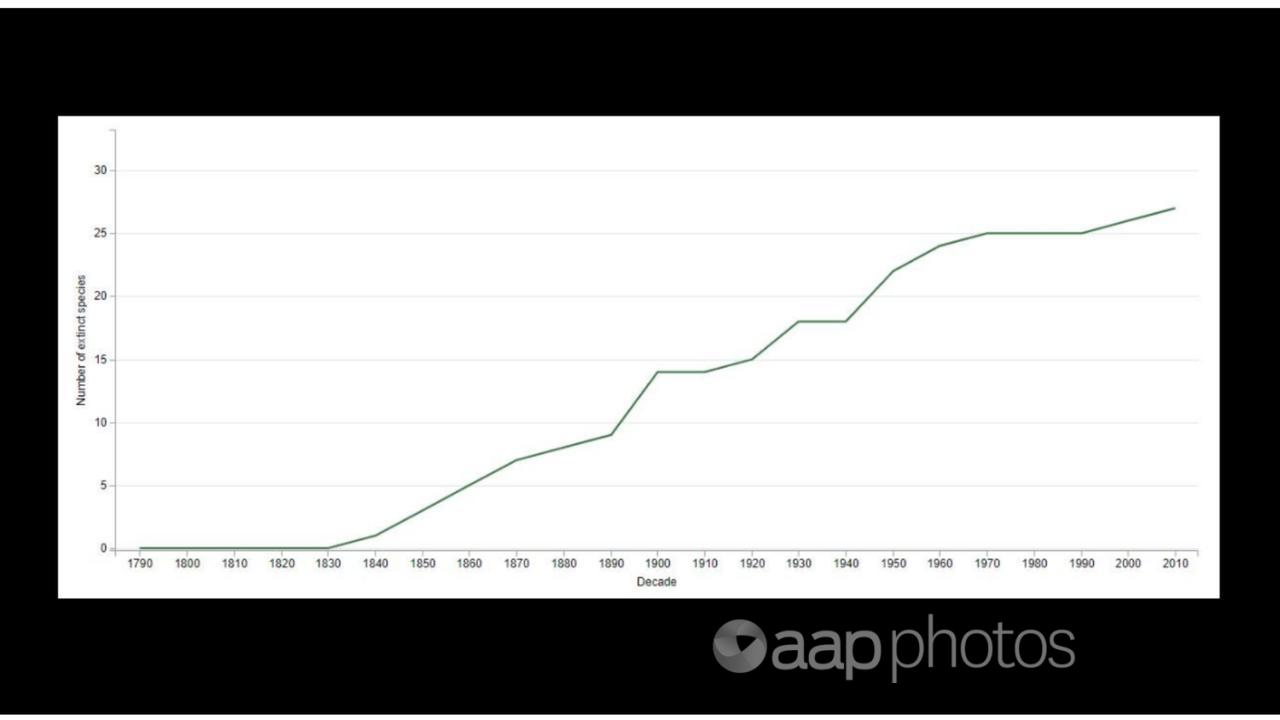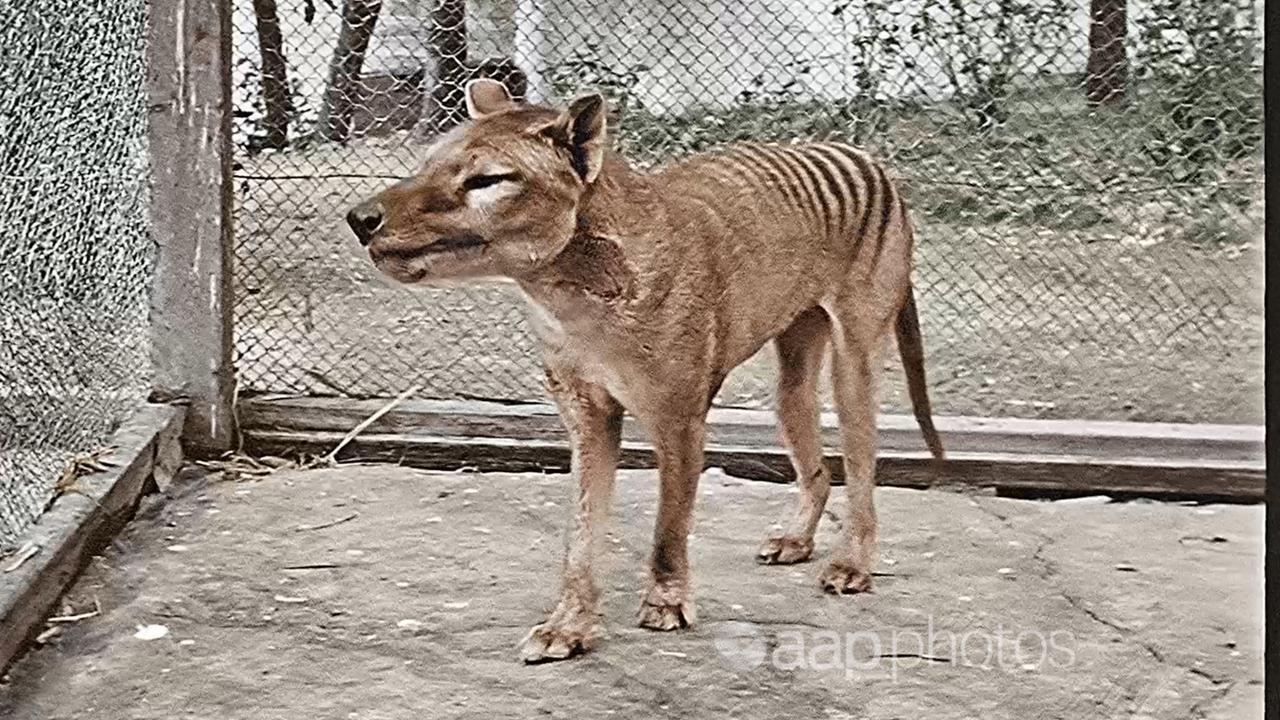A Facebook user says the recent State of the Environment report exaggerates the number of extinctions in Australia, claiming only 27 species of animals and plants disappeared between 1790 and 2010.
The claim is false. Around 100 species have become extinct during this period, with experts saying the real number is likely much higher.
The post was shared to the Australian Climate Sceptics Group on July 22, railing against the report containing “much hype about species extinction”.
Text with the post states: “The number of species becoming extinct in modern history has been grossly exaggerated … there have been 27 extinctions in Australia from 1790 to 2010. There is clearly no acceleration in the extinction rate & no correlation between CO2 emissions & extinctions. This report has been written by activists who had a predetermined agenda to promote, it should be rejected.”
It includes a screenshot of a graph to support the claim.
However, the graph is taken from the previous 2016 State of the Environment report and details cumulative historical extinctions of Australian mammal species, ignoring all other forms of fauna and flora.
The details of the graph explaining this have been cut off in the Facebook post.

Hugh Possingham, a professor at the University of Queensland and the state’s Chief Scientist, told AAP FactCheck in an email: “Of course all species include birds, plants, frogs etc – so the total number is bigger.”
The 2021 State of the Environment report, which was released in July 2022, says there have been “more than 100 Australian species listed as Extinct or Extinct in the Wild under Australian national, state or territory legislation”.
Under the Environment Protection and Biodiversity Conservation Act, the Department of Climate Change, Energy, the Environment and Water lists 104 species as extinct, including 67 fauna and 37 flora.
Of these species, 89 were declared extinct between 1790 and 2010.
John Woinarski, a professor at the Research Institute of Environment and Livelihoods at Charles Darwin University, co-authored a 2019 study which concluded 100 endemic species had become extinct since the nation’s colonisation by Europeans in 1788.
Prof Woinarski told AAP FactCheck three of the species are extinct in the wild, meaning the only living specimens are in captivity, and one – Gould’s mouse – has since been considered to be the same as an extant species.
“So, strictly speaking, the tally is 96 species are known to have become extinct in Australia since 1788,” Prof Woinarski said in an email.
According to the study’s findings (table 1), 90 of these species were declared extinct before 2010. However, Prof Woinarski says the actual number of extinctions is likely to be much larger.
“Many have not yet been formally recognised, notwithstanding no records for decades.”
The 2021 State of the Environment report notes Australia has lost more mammal species than any other continent and continues to have one of the highest rates of species decline among countries in the OECD.
“The number of extinctions of Australian mammals since 1788 vastly exceeds that of any other country over this time frame,” Prof Woinarski said. “The next worse is Haiti, with 9.”
Prof Possingham stressed the extinction of a species is due to a combination of threats.
“Habitat destruction and degradation is a major cause of extinctions, along with the introduction of pests (foxes, cats, rabbits etc.) and weeds,” he said.
“There are a range of other threats such as: changed fire regimes, excessive grazing, water extraction, hunting.
“CO2 emissions and the associated global warming (roughly 1.4C) and sea level rise is implicated in the extinction of the Bramble Cay melomys (a rodent) and is likely to contribute to further extinctions.”
The Verdict
A Facebook post’s claim just 27 species have become extinct in Australia since European arrival is false. The claim is based on a graph from the 2016 State of the Environment report which only included mammal extinctions, ignoring other animal species and flora. Experts and the latest State of the Environment report say the number of confirmed extinctions over this period is closer to 100, and likely to be much higher.
False – The claim is inaccurate.
* AAP FactCheck is an accredited member of the International Fact-Checking Network. To keep up with our latest fact checks, follow us on Facebook, Twitter and Instagram.
All information, text and images included on the AAP Websites is for personal use only and may not be re-written, copied, re-sold or re-distributed, framed, linked, shared onto social media or otherwise used whether for compensation of any kind or not, unless you have the prior written permission of AAP. For more information, please refer to our standard terms and conditions.


















